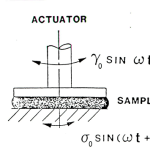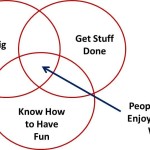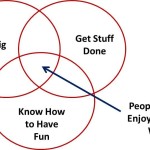Previously we described how to measure the viscosity profiles during non-isothermal curing typical for many prepreg and composite processing situations (lamination, autoclave, etc.). The chemistry is tailored to allow for the resin to soften and flow with the chemical reaction occurring at an elevated temperature. The elevated cure initiation is accomplished using a latent ... [Click to Continue...]
Thursday Break-up: Why Having Fun is So Important
I thought I would continue the Thursday “break-ups” since the topic is an interesting one. This post will talk about why having fun is so important. Can you think of a time, a project, a company, or any other organization where you actually had a blast working? Too bad for those who can’t think of an occasion, but in all honesty, there has to be a situation where everyone ... [Click to Continue...]
Rheology of Thermosets Part 6: Using Non-isothermal Rheology to Optimize Thermoset Processing
Our last post introduced non-isothermal rheology as a characterization technique to measure the viscosity during processing (typically non-isothermal temperature profiles are used). A good example of how rheological methods can be used to optimize a process is to consider a composite lamination process. In the figure on the left, B-staged prepregs are sandwiched between to ... [Click to Continue...]
Thursday Break Up: Three Characteristics of an Ideal Client, Company, or Organization.
I decided to add a Thursday post this week to break up the rheology series. I know some of our readers may not be as “into” rheology as some. We have a long list of pretty technical blog posts scheduled (Dr. Prime will be back with a series of posts on thermoset cure kinetics and Dr. Humphreys will have additional posts on biopolymers). So I have decided to add in a ... [Click to Continue...]
Rheology of Thermosets Part 5: Non-isothermal Curing
In the last post we talked about isothermal cure rheology. This is a good way to look at the curing time, gelation time, and get an understanding of the viscosity temperature dependence, but most commercial thermoset processing methods are non-isothermal. Whether it is bulk molding compound (BMC) molding, prepreg lamination for composites, or integrated circuit encapsulation ... [Click to Continue...]





